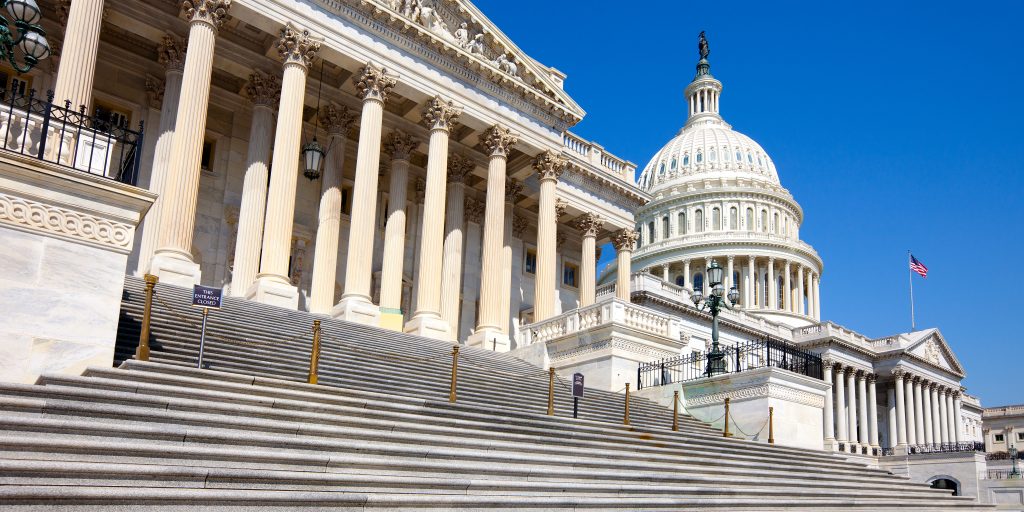Building trust: Moving away from self-administration
Trust is the fundamental currency of leadership.
This is particularly true in the public sector, where elected officials, appointed commissioners and public administrators are entrusted with the safety and well-being of their constituents. From neighborhood associations to city councils, county boards, state legislatures and Washington, D.C., the U.S. has many forms of government. But as different as each legislative body may be, their functions are the same: to protect the public trust.
Two simultaneous crises of trust continue to affect the public sector. First, peer-reviewed research from several leading institutions point to a widening erosion of psychological trust in government. In a 2021 report issued by Deloitte, researchers found that a majority of citizens surveyed are dissatisfied with how the federal government has handled the pandemic. Survey results showed that citizen trust in state and local governments also significantly declined during the pandemic.
Second, and equally important, cities face generational disparities between constituents’ needs for government services and the resources available to deliver on these promises. Made worse by the ongoing effects of the coronavirus pandemic, diminishing tax bases and trailing civil-service job gains, today’s public financial trusts are also dangerously low. The National League of Cities surveyed more than 2,500 cities, towns and villages, with nearly all communities greater than 50,000 in population reporting a revenue shortfall this year.
Faced with these dual perils, public administrations build trust through two primary solutions:
- Demonstrating a depth of well-developed, trustworthy processes to deliver on their promises with good intent
- Expertly fulfilling their fiduciary duty to achieve superior financial outcomes.
In short, protecting the public trust requires governmental entities to demonstrate high levels of integrity and expertise.
One way government entities can help build public trust is by outsourcing claims administration. When examining the mindsets and characteristics related to psychological trust and delving into the claims administration practices that build public funds, it’s important to take a closer look at the positive effects of transitioning away from self-administration of claims.
Governmental entities that handle their own property and casualty claims are often guided by historical experience, decisions made by previous administrations and inertia. Moreover, two critical assumptions generally inform an entity’s decision to self-administer: it allows the organization to more diligently control both the claims function and its claims data; and, it better supports the organization’s internal and external stakeholders. However, each of these assumptions and adherence to the status quo tends to put public trust at risk. Moving away from self-administration helps build public trust.
Outsourcing claims operations heightens transparency and vulnerability
Deloitte’s research indicates that transparency fosters trust. Governments that openly share information, motives, policy priorities and program decisions in straightforward language demonstrate trustworthiness. This is particularly true when it comes to public-private partnerships in claims administration.
We see instances where new mayoral administrations decide to outsource self-administered workers’ compensation programs to improve services for injured workers and help prevent fraud, waste and abuse in the administration of claims. Engaging an independent third-party administrator to manage casualty claims not only can improve claims handling and outcomes for claimants, but it can also introduce new controls and oversight to better serve employees.
Recently, New York Mayor Eric Adams created the Mayor’s Office of Risk Management and Compliance. In his press release, the mayor highlighted this new position as, “central to his vision for delivering an accountable, efficient and transparent government” and “to serve as watchdogs for [the] city and make sure taxpayer dollars are being spent appropriately.” Fostering relationships with independent service providers exhibits municipal vulnerability and transparency––key markers of building public trust.
Transferring away from self-administration relieves a widening resource gap in public services
According to research from The Pew Charitable Trusts, the greatest workforce reductions since the beginning of the pandemic have been in local governments. As of August 2021, local public payrolls were down 5.3 percent from pre-pandemic totals––representing more than 350,000 jobs, excluding education positions. State government employment has declined slowly every month in 2021, with the total down 2.1 percent from pre-pandemic levels, or about 57,000 jobs.
These labor conditions have set the stage for governmental entities to leverage public-private partnerships to optimize staff. Gallagher Bassett recently discussed these trends with a roundtable of state risk managers at a national conference. The common refrain in the conversation? Outsourcing recouped immediate savings by shedding benefit and overhead costs. Second, when the claims administration vendor provides a full suite of ancillary services, such as a Risk Management Information System, it allows risk management departments to sunset other procurements and contracts necessary to support self-administered claims handling. And, most importantly, the outsourced claims team allows risk managers and law departments to focus on the organization’s proactive strategic initiatives.
Outsourcing claims improves the customer experience
Now more than ever, governmental leaders are viewing public service through a customer experience lens. Late last year at the World Economic Forum’s Inaugural Urban Transformation Summit, global leaders underscored the need for increased public-private collaboration to capitalize on funding to tackle growing urban challenges. In the United States, the White House recently announced an executive order: “Transforming Federal Customer Experience and Service Delivery to Rebuild Trust in Government.” This executive order contains more than 30 outsourcing projects to modernize customer experience in high-impact, constituent-facing agencies, such as the Department of Veterans Affairs and the Department of Health and Human Services.
This trend toward improved customer experience and real-time innovations to expedite the flow of information to internal and external stakeholders is most prevalent in claims administration. In truth, there are few transactions more personal than casualty claims administration, which literally involves the communication and human interaction necessary to help put someone’s life back together. And the most critical pathway to engender trust among claimants is through rapid, complete communication.
Unlike planning for a digital transformation in other areas of public service, leading-edge web-based claims access, robust mobile applications and accurately digitized claims files are already part of modern claims-administration service offerings. Public-private partnerships in the area of claims administration can immediately upgrade these critical communication and reporting tools in their governmental claims teams, allowing their administration to conserve capital for other critical constituent projects.
The touchstone principle of governmental administration is to protect the public trust, both in terms of psychological trustworthiness and in sound financial management of public funds. It’s important for city, county and state governments to understand the key considerations and advantages of transferring away from self-administration of casualty claims, including increased transparency, optimization of resources and improved customer experience.
Greg McKenna is the National Practice Leader, Public Sector, at Gallagher Bassett. He has more than 20 years of industry experience. He is a RIMS Political Action Committee (RISK PAC) Trustee, and frequent speaker on legislative and regulatory issues facing public risk management.




















